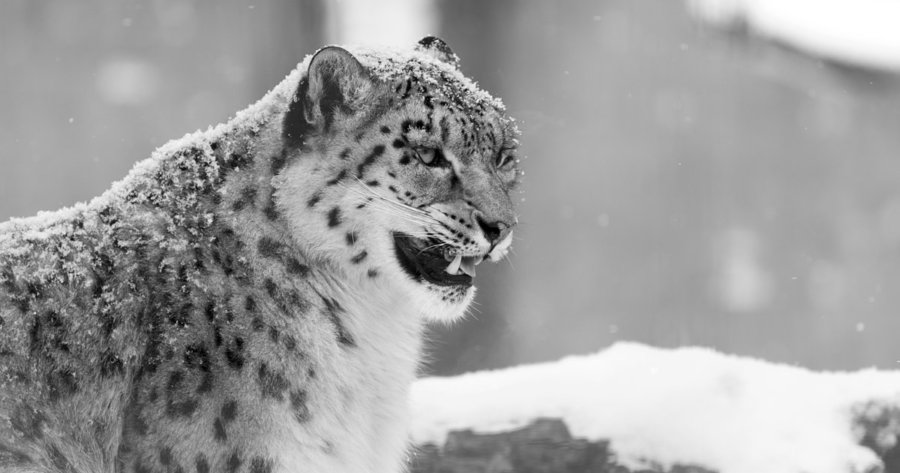The Allure of Nature Documentaries: Conservation Through Storytelling
Nature documentaries such as Netflix’s ‘Our Planet’ tell a cautionary tale of world destruction with striking cinematography and a colorful cast.
Nicolas Goulet, CC BY 2.0
The snow leopard blends into his surroundings, inviting the prey come to him.
A snow leopard — his calculated steps leave delicate imprints in the cold, sugar-like crystals of snow that are dusting the ash mountain ridges. The black spots, gray fur, and pale underbelly make the ultimate invisibility cloak, allowing only the keenest observer to detect the leopard’s movement. With each stride, his weight shifts between his shoulder blades in an oscillating rhythm. Unlike his light footprints, the leopard’s gaze is forceful. The reason for his intense stare is unknown. Then four Bharal enter the frame, prancing carelessly to their death. The battle reaches its climax, and the leopard lunges at its meal, unaware that there is a two-hundred-foot drop just below its paws.
At one point or another, everyone has seen a clip from a nature documentary, whether compelled by boredom or in anticipation for the newest release. Eager audiences reunite at last with their favorite cast members — the energetic Emperor penguin, the clumsy Congo lion, and the cautious Crane, along with newer additions like the sassy Sperm whale.
At first glance, skeptics may wonder ‘What is so appealing about watching a baby penguin taking its first steps or a monkey grooming itself?’ but avid viewers are quick to defend nature documentaries. They argue that the allure lies in their promise of showing viewers a hidden world — one that unfolds underneath our feet, above our heads, and across diverse terrains.
Although people do not often make the connection between “savage animals” and “civilized man,” these creatures’ stories mirror our own, penned by the same author, Mother Nature. She crafts a thrilling patchwork of wild adventures in unlit sea caves and tall rainforest canopies, shrouded in familiar themes of family, survival, and trust.
Very few people would get the opportunity to dive deep into the Arctic Ocean to observe penguins catching krill or chase a cheetah across the savannah; but platforms like BBC, National Geographic, and most recently, Netflix make it possible for us to feel connected to the natural world from the comfort of our homes, as ironic as that seems.
BBC has produced a number of highly renowned documentaries such as ‘Planet Earth (2006),’ ‘Planet Earth II (2016),’ ‘Blue Planet II (2017).’ If there were a class titled ‘Nature Docs. 101,’ these series would be the fundamentals. Over the years, there has been great progress in cinematography, storytelling, and innovation in capturing aquatic and airborne animals on tape.
In 2019, the same production team from BBC created an eight-part series ‘Our Planet,’ which Netflix released for free on their YouTube channel. While the official statement reads “at [teacher’s] request, we have made a selection of our documentary features and series available” for educational purposes, I think this move serves a greater purpose in spreading awareness about conservation. As of 2022, Netflix has over 214 million subscribers with another twenty-three million subscribers on YouTube as well. Their platform has a worldwide reach, making it easier for people to learn about the natural world. Thanks to Netflix’s generosity, I was able to watch a documentary four years in the making, filmed in fifty countries, in a mere eight hours.
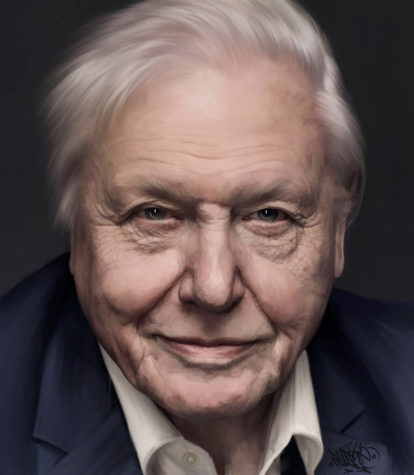
Each episode starts with the same ninety-second monologue, narrated by none other than Sir David Attenborough, an English broadcaster best known for his work in natural history. If the BBC were to supply the textbooks for ‘Nature Docs. 101,’ Attenborough would be the professor. His lifelong dedication to saving the natural world has made him a hero, especially among the young, who look to him as an inspiration. Even at ninety-five, he works to mobilize leaders and the younger generation with his enlightened world view.
Attenborough’s narration work on acclaimed documentaries renders his voice a treasure within the community — gentle, raspy, and reminiscent of one’s grandfather, if he speaks with a wise, comforting tremble.
He begins with the ever-familiar “Just 50 years ago, we finally ventured to the moon. For the very first time, we looked back at our own planet [….] This series will celebrate the natural wonders that remain, and reveal what we must preserve to ensure people and nature thrive.”
In the ‘Jungles’ episode, the cameras follow a silverback gorilla as he bulldozes his way through the forest, crushing saplings on his path to the Mbeli Bai. His knuckles are full of resolve as he punches the compact Earth, cushioned by a bed of leaves.
The film cuts to the shimmery Mbeli Bai as the gorilla nears it. It is a swampy clearing in the Republic of Congo which serves many of the jungle’s inhabitants, replenishing them with water, food, and other nutritional necessities. However, unlike the public opinion of swamps that conjures up images of foul green water and overgrown vines, the Mbeli Bai reflects a sanctuary.
The drones offer viewers a bird’s-eye view of the wetland’s open space. The patches of aquatic grass cover nearly every surface like large tea leaves in a thirteen-hectare mug. Underneath the islands, the lucent water peeks through and these cavities form a natural star-shaped pool at the heart of the Bai.
A different angle provides a closer look, gliding over the Bai to give us the impression of standing in the wetland. Although the camera angle obscures the view of the sky, it is reflected in the pristine, watery mirrors from under the grass. A silverback settles into a field of aquatic plants with two timid twins huddled together on his back while his thumbs quickly work at grabbing handfuls of grass.
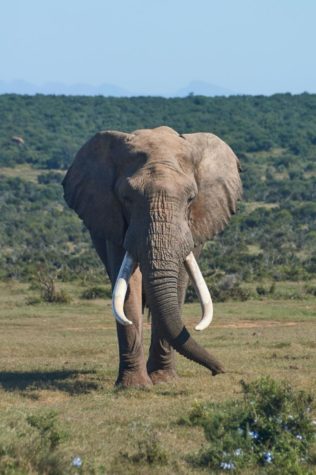
On the opposite end, an elephant head slowly emerges from the water, dampening her brown skin to a grayish-black. Her face is characterized by wrinkles which are most prominent around the eyes. As audiences attribute their feelings for the elderly to the elephant, they feel an urge to treat her with fragility, respect, and tenderness. Her eyes are strangely alluring with their intricate maze of creases, showing humans how to age with grace. Her large trunk splatters water to and fro, engaging others in a friendly pool fight. Around her, babies socialize by chasing and jumping onto one another. An uplifting montage follows; this is Eden, indeed.
Another episode, ‘Frozen Worlds,’ begins with a resounding truth: “The polar regions of our planet may seem beyond the reach of most of us, but they are not beyond our influence.” After the opening act of the penguin ensemble, a great humpback whale takes center stage. It pierces through water, working against gravity to lift its dark knobbly head, announcing its arrival. Its slightest movements create grand ripple cascades.
To my surprise, Attenborough announces that these sea giants feed on finger-length krill. How can they sustain themselves on mere krill? It goes to show that even the smallest of animals can play a huge role in maintaining ecosystems.
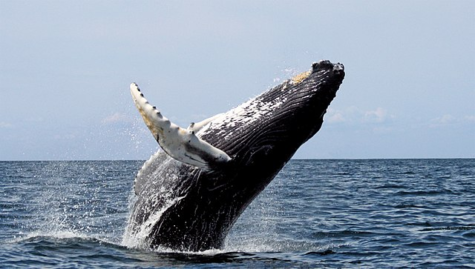
The humpback is joined by another, during which they both lunge sideways, cast open their jaws like fishing nets, and close in on the pitch-black sea containing krill. The scene almost appears CGI-animated due to the high-definition cameras. The whales’ skin looks like polished leather from above, and their large mouths cut through the surface with the same deafening sound as ocean waves crashing onshore. It’s outlandish, scary, chilling, and breathtaking at the same time. Their great tails, rigid like thin scraps of metal, slowly disappear into the frigid depths of the ocean.
When the krill is no longer located at the surface, the whales coordinate themselves to blast air bubbles from below. The voluminous globs rise quickly, pushed up by the sixty-six thousand pound, swimming underwater volcanoes. On the surface, the pockets of air create the impression of raindrops hitting the ocean puddle.
The final result is a foamy spiral drawing on the black liquid parchment. The black ink turns icy white as it mingles with the air. As the air bubbles condense closer together, the krill are trapped at the center of it. The feeding spell the whales cast works.
Although there are many cinematic shots of majestic creatures, the documentary does not forget its mission — conservation. Near the conclusion of each episode, the narration style transitions to a more informative, urgent tone. For this particular episode, they caution viewers about the melting sea ice. As we “lose one of our planet’s protective white shields,” millions of animals are left without homes.
At the 43:35 mark, viewers are left with a very depressing image. A top-down shot of a lone polar bear, using the doggy paddle to cross the vast expanse of the sea. The pitiful creature is stuck in a black hole with no neighboring ice sheets or solid surfaces — nothing but an endless black.
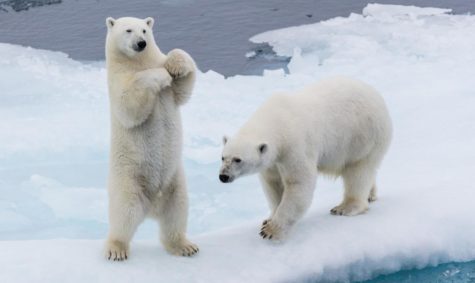
‘Our Planet’ does a wonderful job of making people care about the environment without being overly preachy. It builds entertaining stories that tug at our heartstrings. These tales include the thieving fish stealing shells from its neighbor in ‘Fresh Water,’ penguins running the gauntlet to feed their children in ‘Frozen Worlds,’ and the bird that is too scared to fly in ‘Jungles.’ At the end of each video, viewers are left with a lot to think about.
We’re not only horrified by our actions but are also amazed at the vulnerability of nature to open herself up to us. The diversity of life and her unrelenting strength is admirable. After getting the audience to develop attachments to the characters, the film delivers its warning.
In ‘David Attenborough: A Life on Our Planet,’ the naturalist narrates, “This is not about saving our planet, it’s about saving ourselves. The truth is, with or without us, the natural world will rebuild […] We humans cannot presume the same.”
The poetic nature of the documentary awakens a sense of wonder that many of us have lost after living in cities and man-made environments. A joint study conducted by BBC Earth researchers and the University of California, Berkeley reveals that watching nature documentaries result in a surge of positive emotions such as “awe, wonder, and curiosity.” However, it is ridiculous that even though nature is a solace for many of us, we hardly spend time in it, creating literal barriers in the form of walls and roads.
Tom Hanner, a natural history filmmaker, urges people to immerse themselves in that other world. “Well-trodden paths snake their way through local reserves, parks, and waterways like stark reminders of routine. They stand out like a sore thumb. Is there nothing better than shaking off the shackles of the same old, same old, and EXPLORING outside your comfort zone? […] Since being at home I’ve been making the conscious effort of following subtle paths made by animals (and even making new ones) to see where they lead, and often the results are STUNNING / Running, rushing streams splooshing along in secret / Tall grass in sun-kissed fields alive with ladybirds taking wing / Signs of successful nighttime hunts / Great trees bending in the wind like giants telling secrets.”
It is frustrating how little is being done to address the climate issue. It is always ‘too little, too late,’ ‘all talk, no bite.’ In an address to world leaders, Attenborough said, “we’ve taken that stability for granted. Our economies and political systems are unconsciously predicated on the belief that nature will continue to be a benign and regular provider of the conditions we need to thrive —regular seasons, dependable fresh water, endless fish, pollinators, minerals, soil.”
Nature documentaries provide more than entertainment. They remind us of the “savageness” of our own human nature as we destroy everything in our wake. The soothing narration of Attenborough is like the drizzling rain in one’s sleep, alluring but prophetic. To forget that we share ‘Our Planet’ with so many others is to risk losing Earth’s “treasure trove of diversity.”
To watch Netflix’s ‘Our Planet’ documentary for free, click HERE.
Tom Hanner, a natural history filmmaker, urges people to immerse themselves in that other world. “Since being at home I’ve been making the conscious effort of following subtle paths made by animals (and even making new ones) to see where they lead, and often the results are STUNNING / Running, rushing streams splooshing along in secret / Tall grass in sun-kissed fields alive with ladybirds taking wing / Signs of successful nighttime hunts / Great trees bending in the wind like giants telling secrets.”
Nicole Zhou is the Editor-in-Chief for ‘The Observatory' yearbook and a Staff Reporter for 'The Science Survey' newspaper. This is her third year revising...

